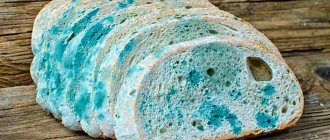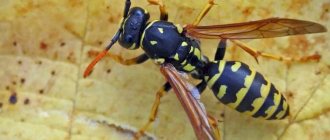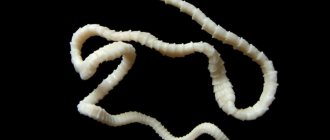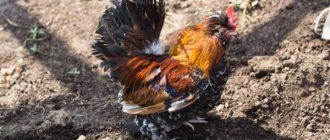What is oidium or powdery mildew?
The disease is widespread (other names are linen, ashtray). The causative agent, the fungus Oidium tuckeri, falls on the grape bush and affects all above-ground organs: shoots, leaves, flowers. Spores form on the hyphae of the parasite, from which new mycelium appears. In late autumn, tiny, barely noticeable dark balls with a spiral or loop screwed into threads are visible (spores overwinter in them). Infected grapes dry out and the berries crack. The entire harvest may be lost.
Xerophyte likes dry and hot weather. It feeds only on living cells. Therefore, it quickly dies on plucked shoots and bunches, and it is diagnosed on freshly collected plant material. To recognize grape oidium, you can look at numerous photos. Early diagnosis will help determine how to treat.
Agrochemistry in the fight against powdery mildew on grapes
Thiovit Jet. One of the most popular and effective drugs used to combat fungal diseases of plants. Destroys powdery mildew by destroying their cells. The product belongs to the third toxicity class according to the WHO classification. When used correctly, it does not pose a threat to people, animals, birds and bees.
Quadris. A safe and effective fungicide that reliably controls four classes of fungi, including the causative agent of powdery mildew. Quadris exhibits a selective effect, is not toxic to agricultural crops, and the waiting period does not exceed 5 days. The maximum number of treatments for grapes is 3, the last spraying is carried out no later than 25 days before harvest. The drug effectively destroys both parasitic fungi and their spores.
Thiovit Jet Quadris fungicide
Topaz, Ke
Topaz, Ke. A highly effective systemic fungicide of a new generation, the main purpose is to combat powdery mildew fungi and their spores. When it enters a plant, the drug moves through its systems, thus protecting all parts of the vineyard that have been infected. The rate of therapeutic effect occurs 2-3 hours after spraying. To achieve maximum effect in the fight against powdery mildew, it is recommended to use a fresh solution.
Ordan. A two-component systemic fungicide protects grapes from all major diseases. The drug is used both for the treatment and prevention of powdery mildew. The advantages of this fungicide include the fact that it is not addictive to parasites and can be used in the vineyard for a long time. Contact fungicide Ordan penetrates the plant within one hour after spraying and spreads throughout the vine, preventing the emergence of new foci of the disease, killing fungi and their spores.
Causes and pathogens
The disease got its name because of its external signs. When bushes become infected, spots similar to flour stains appear on the leaves and flowers. If urgent control measures are not taken, the disease will spread to the stems. The color of the fungus is somewhat transformed into greyish, brown or brown. In addition to natural factors, plants can become sick if they are not properly cared for and if the following events occur:
- fallen leaves that are not collected can retain fungal spores;
- significant temperature changes and sharply changing weather conditions;
- in summer, prolonged precipitation and high humidity levels (85 - 100%) with high long-term t;
- abundant watering of plants;
- too much nitrogen in the soil;
- radical pruning of the bush;
- bushes planted too close to each other.
Causes and provoking factors of infection
Small fungal spores easily fall on the vine with gusts of wind, on the legs of insects and on the gardener’s clothing. Once on the plant, the pathogen invades living tissue and begins to develop intensively. Favorable conditions for spore reproduction:
Air temperature from + 25 degrees
Density of branches and close proximity of bushes
Presence of weeds on the soil under the bushes
Main signs of damage
Visual diagnosis is carried out according to the characteristic signs of oidium.
The first signs are that the leaves on top are sprinkled with a white powdery fungal coating, which darkens over time. Heavily affected leaves turn yellow but do not fall, reducing the assimilation surface area and weakening the plant.
Escape. Dark shapeless spots merge with each other. Sometimes green twigs are completely covered with plaque. From severe damage, the shoots turn black and die - uneven lignification occurs, which subsequently suffers most from frost. In spring, such shoots grow slowly and the leaves curl.
Inflorescences and berries. Symptoms vary depending on the degree of ripeness. Young fruits, with a sugar content of up to 8%, become covered with plaque and dry out. When the berry has reached ripe size, and only then infection occurs, it will continue to ripen. But the fungus also lives and will damage the integrity of the epidermis, because of this the berries will crack and become deformed. If the bones protrude outward, this is a characteristic symptom of the lesion. Often the spoilage of berries is enhanced by the pathogen of gray rot (Botrytis cinerea) or wet rot (Penicillium expansum). If dark spots appear on the berries under the shell, although the integrity is preserved, the skin hardens and becomes colored, a mesh pattern on the surface is also powdery mildew of grapes.
Traditional and biological control methods - how to protect the crop without using chemicals
For mild lesions during the summer fruiting period, grapes can be treated with a biologically based folk remedy. It contributes to the overall strengthening of the structure and properties of the grapevine and is quite effective in the prevention and early treatment of powdery mildew.
80-100 kg of sifted humus is poured into a large iron or plastic barrel and filled with a small amount of clean warm water (20-25 degrees). Next, cover it all and leave it in this form to infuse for 5-6 days, stirring occasionally. After this, the saprophytic concentrate is filtered through thin gauze and the resulting composition is sprayed on the young vine and grape leaves.
It is important to have time to carry out the treatment at a time when the leaves are just beginning to bloom and are not yet affected by infection. The active substances from the mixture enter the very pores of the fungus and prevent it from growing normally. If necessary, the plant is sprayed with the same composition after flowering; a total of 2-3 procedures are carried out per season, in rainy or cloudy weather at a temperature not exceeding 20 degrees.
Folk methods of combating oidium in the vineyard are also effective, although they are largely experimental, but they are biologically pure and, in addition to prevention, serve as additional fertilizers.
Among such funds are the following:
- Infusion of wood ash. Half a standard bucket is diluted in 7-8 liters of water, boiled for 20 minutes or left to infuse for a day. Dilute with the same volume of water, add a little green soap (50–70 g). The resulting solution is used to treat the surface of the leaves in the morning and evening.
- Straw dust. It is poured with warm well water (1:3) and allowed to brew for several days. Then it is diluted and manually or using a special sprayer, the solution is evenly sprayed throughout the vineyard in cloudy or rainy weather.
And of course, we must not forget about standard agrotechnical measures for caring for grape bushes. Timely application of fertilizers, mineral and organic fertilizers, spring and autumn pruning, staking and treatment of leaves and wood with contact preparations, uniform watering prevent the appearance of various viruses, including fungal infections such as oidium.
Oidium or mildew
Alas, in addition to this disease, green spaces suffer from peronosporosis or downy mildew. First, the leaves become covered with oily yellowish or brown spots. Without treatment, the disease progresses: the lesions grow and the leaves curl, die and fall off. If the plant survives and begins to bloom, the inflorescences will be underdeveloped, and the seeds and fruits will be very small.
These are different fungal diseases. Mildew affects the upper part of the leaf in the form of whitish spots, after a while they become flour-like in color. After fog and dew, the underside turns brown and dries out. Mildew is dangerous not only for young leaves, grape inflorescences - the bush as a whole. The remaining berries will remain sour. If they are ripe, then they are not afraid of peronosporosis.
Signs of appearance
Signs of development are:
- Slow growth.
- Curling leaves inward.
- No pests or cobwebs are found on the unfolded leaves, but there are brown spots and a whitish or gray coating.
Oidium can infect grapes not only at the beginning of summer, but also later - during the period of flowering and fruit formation.
In such cases, the flowers will dry out quickly, and brown spots will spread on the berries.
How to treat oidium on grapes
To save vineyards from damage, a set of measures is needed, namely: prevention, agricultural technology, folk remedies. Agronomists advise combining the fight against oidium and mildew, since the prevention is the same. The bushes are sprayed with special combined chemicals made from sulfur or copper.
Treatment with chemicals
In a fine dispersed form, fungal cells absorb sulfur, turn into hydrogen sulfide, and poison the fungal spores, acting as poisons. In the southern regions, treatment begins during the period of bud opening, thereby preventing the appearance of grape diseases on young shoots. Solid sulfur turns into vapor form only in warmth, so spraying is carried out at an air temperature of +20 ° C in the morning or evening. In hot weather, there is a danger of burns on foliage and berries. Prevention requires 30–40 g/10 l, treatment – 95–100 g/10 l, waiting period – 56 days. If the air temperature is lower, colloidal sulfur or other sulfur preparations for oidium work more effectively. 3–5 treatments are carried out per season.
If the grapes got sick in the last growing season, then they should be treated for oidimum as early as possible. After the procedure, there must be a dense layer of sulfur on both sides of the sheet plates. If it gets wet, it is better not to use it. It is difficult to overcome the disease without chemistry. Regular preventative spraying helps avoid fungal infections. Moreover, such a solution contains 3-4 times less active substance than similar ones for treatment.
Fungicides
This is high quality sulfur in the form of granules. Fungicides are divided into contact and systemic. Contact ones are applied to the leaves and remain on the surface until it rains. Others do not depend on rain, penetrate inside, work for the period specified in the instructions, and are most effective against a specific disease.
As stated above, sulfur treatment kills powdery mildew in grapes. Therefore, plantations are pollinated with finely sifted sulfur. The smaller the grains, the better the result. When spraying sulfur, it is advisable to create a dense cloud over the grape bushes so that the falling sulfur dust can penetrate deep inside the bush, destroying lesions.
Important! You need to prepare the solution and spray the plants wearing personal protective equipment (working clothes, boots, rubber gloves, goggles, respirator).
It is recommended to allocate a separate special container for the solution. Fill it with water to 1/3 of the volume and add pesticide according to the calculated consumption rate, mix until completely dissolved. Then pour into the sprayer tank, add water until full and mix again. During spraying, the uniformity of the working solution should be maintained by stirring periodically. Use within 2–3 hours.
Oidium in the vineyard - description and main symptoms
As soon as the green shoots of grapes begin their active growth, at the end of May or beginning of June, underdeveloped branches, weak, with curly leaves, which are later covered with a white or gray coating, similar to flour or wood ash, may appear among them. This is a signal that the fungal spores, which have been in the buds since last year, have become more active and gradually spread over the entire surface of the branches and leaves.
After some time, the fungal coating in the form of pollen reaches the inflorescences with clusters, and the entire grape bush affected by oidium looks as if it was sprinkled with ash. If no therapeutic action is taken, inflorescences infected with powdery mildew die, and the grape fruits quickly dry out.
The insidiousness of this disease lies in the fact that the fungus lives only on living tissues and over time greatly spoils the bunches, which is why even a partially affected branch is practically unsuitable for consumption. Moreover, it is not recommended to make wine from such grapes, because the final product acquires a characteristic moldy taste and corresponding smell.
A progressive infection penetrates the cells of the grape epidermis, gradually destroys them, taking away the necessary nutrients to continue their life.
The incubation period for the development of the fungus depends on weather conditions and the variety, but most often the transformation of fungal spores into a visible coating on the leaves and fruits of the plant occurs at a temperature of 15-20 degrees in 10-14 days.
The most comfortable habitat for the fungus that causes oidium is moderately warm, damp weather with high atmospheric pressure, as well as the lack of good ventilation of the area. Therefore, poorly ventilated grape plantings and heavily dense bushes and bunches most often suffer from this disease.
Powdery mildew affects all European grape varieties without exception. Caraburnu, Rosetia, Chardonnay or Rkatsiteli with or without rootstocks are especially affected. But there are also species that are relatively resistant to oidium damage, among them are: Sauvignon, Aligote, Kishmish, Malbec.
Agrotechnical measures
Agricultural technology is designed to create highly productive plantings to obtain high-quality products with minimal labor and material costs. Glubokoye studies the biology of the grape bush, natural and technical and economic conditions of cultivation, uses the latest developments and advanced production experience. Agricultural technology for grapes includes the whole range of work, including: site preparation and planting, tillage, fertilization, irrigation, pruning. It also protects plants from adverse weather conditions, weeds, diseases, and pests.
Prevention of powdery mildew on grapes
Any doctor will tell you that a disease is easier to prevent than to cure. This also applies to grapes.
To begin with, it is advisable to purchase disease-resistant grape varieties. Other important recommendations:
- planting seedlings in such a way that the plants form correctly, and therefore are well ventilated and blown by the wind, since a ventilated vine prevents the active development of infection.
- in the fall, be sure to remove all foliage from under the bush - it is in it that fungal spores accumulate;
- It is necessary to carefully trim the plants, remove dry and affected parts of the plants;
- after opening the vine, the soil is treated with a solution of ash, the root system and the plant itself are sprayed;
- The vine needs special attention after long rains - moisture promotes the development of powdery mildew;
- The vineyard should be watered after the top layer of soil has dried.
Grape varieties resistant to powdery mildew
To avoid having to fight powdery mildew for a long time, you can plant varieties in your garden that are not afraid of this disease:
- Zaporozhye raisin. The variety is popular in Europe and Asia. Seedless berries. A universal variety with good resistance to transportation.
- Anthony the Great. Widespread table variety. Resistant to frost and powdery mildew. Berries weighing up to 17 grams.
- Dviet blue. Perfectly adapted to the climate of the middle zone, short ripening period. Resistant to oidium and other infections.
- Rochefort. Early ripening frost-resistant variety. Small blue berries with a harmonious taste. Shows good resistance against powdery mildew subject to preventive treatments.
- Zaporozhye giant . Large purple berries, highly resistant to frost and powdery mildew.
Vineyard resistant to fungal diseases
Powdery mildew or oidium is a fungal infection that poses a threat to the harvest and planting of grapes. Serious consequences can be avoided by taking preventive measures, strictly following agricultural practices, processing technology and using an integrated approach to combating the disease.
Grape varieties most susceptible to oidium
Grapes love warm, mild climates. Today, breeders are successfully developing varieties for the harsh northern latitudes. There are more than 50 varieties in the register of achievements. They can be divided into disease-resistant and non-resistant. Unresistant varieties in garden plots must be frequently sprayed (5 – 6 or more) with special complex preparations. Problematic categories: Chardonnay, Hungarian Muscat, Arcadia, Artashati, Muromets, etc.
Timing of autumn grape processing
Fruit collection and spraying time depend on climatic conditions.
- In the southern regions, the procedure occurs on September 7-17.
- Gardeners living in the middle zone process from September 20 to 30.
- Adapted early grapes are used for planting in the northern regions. The harvest is harvested between the 7th and 15th of the first autumn month. The bushes are processed immediately after ripe grapes are removed from the vines.
When preparing grapes for spraying, the gardener must trim the tops of the vines and cuttings, and remove dry leaves.
If you plan to use iron and copper sulfate for processing, you should wait until the leaves naturally fall off and the buds close.
By rushing into processing, the summer resident will only burn the plants. In this case, the grapes are sprayed in the second half of October.










